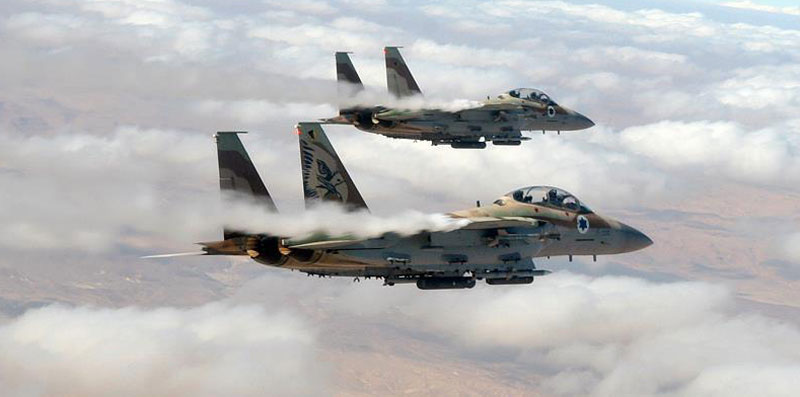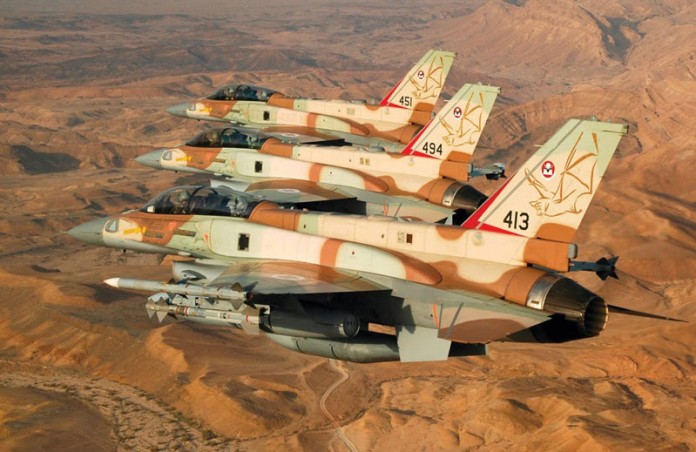
At a time when Israel’s Ministry of Defense (IMOD) is striving for cash and the Israel Air & Space Force (IASF) is shutting down training due to lack of funding, it is encouraging to listen to the commander of the IASF, Maj. General Amir Eshel talks about the state of air force and how much it has evolved and strengthened in recent years. Following are excerpts from a post originally published by the IDF Blog.

“I believe our capabilities are only second to the United States, from both an offensive and defensive standpoint” General Eshel told the audience at the Israel conference of National Security, in April 2014. IAF commander said, referring to a significant leap in capabilities over the past two years. The commander said he has based his assessment on an evaluation of IDF abilities and conversations with officials from foreign militaries.
“We have an unprecedented offensive capability, which allows us to accurately strike thousands of targets in one day. We have doubled our abilities twice in the past two years. By the end of 2014, we will see an improvement of 400 percent to our offensive capabilities relative to the recent past, as a result of a long improvement process.”
“By the end of this year (2014) the Air Force can do in less than 24 hours what it did in three days of fighting during the Second Lebanon War of 2006. It will be able to do in 12 hours what it did in a week of fighting during Operation Pillar of Defense in 2012.”
Eshel: “We have doubled our abilities twice in the past 2 years”
Eshel did not elaborate on the means that have contributed to this dramatic increase in air power, but Maj. Gen. Eshel explained the reasons behind the investments in such powerful and extensive strike capabilities: “Israel can not afford lengthy attacks. We need to win quickly. A short time, in my opinion, is a few days. I do not believe in conducting long wars.”
The air force chief argued that accurate and quality firepower is the main variable in achieving victory. To do so, he said, “It’s not enough to have just technical ability – we need to adopt an approach. We’re talking about an operation with full power, all of the air force, all encompassing, from the opening of the offensive effort in order to strike as powerfully as possible and shorten the war.”
Analysts: The increased capability is likely to associate with improved intelligence acquisition, targeting capabilities, and deployment of smaller precision guided weaponry

“We can destroy the military capabilities and infrastructure that support the activities of Hezbollah on a scale that would require decades to rebuild. [We could achieve] a direct hit on the terror organization and all that supports it on an unimaginable scale,” the IAF commander said.
“Unfortunately Hezbollah took its assets and moved them into the cities,” he added. Hezbollah terrorists position themselves deep within urban areas, where they use homes and civilians as shields against Israeli counterattacks. In recent years, they have also mastered the technique of disappearing underground.
“This is a very significant challenge because we do not want to hurt innocent bystanders. We’ve more than once that houses that are inhabited by citizens will be harmed…These are military targets that support their war effort.”
In the face of these challenges, the IDF uses precision strikes to eliminate terror targets – a method which also prevents operations from spiraling into wars. “What characterizes [our] air power is our ability to control its impact, and this is very important during incidents of combat between wars,” Maj. Gen. Eshel explained. “Everything is flexible and subject to change. This is the advantage of the air force: the ability to take the hammer that was made for wars and use it in a more limited capacity.”






















